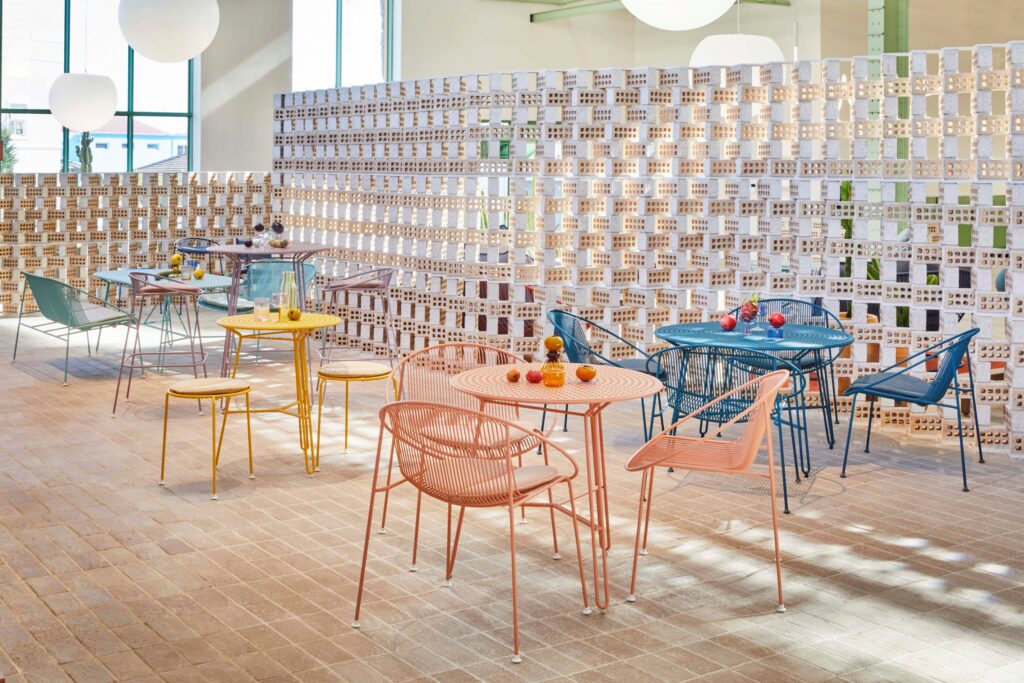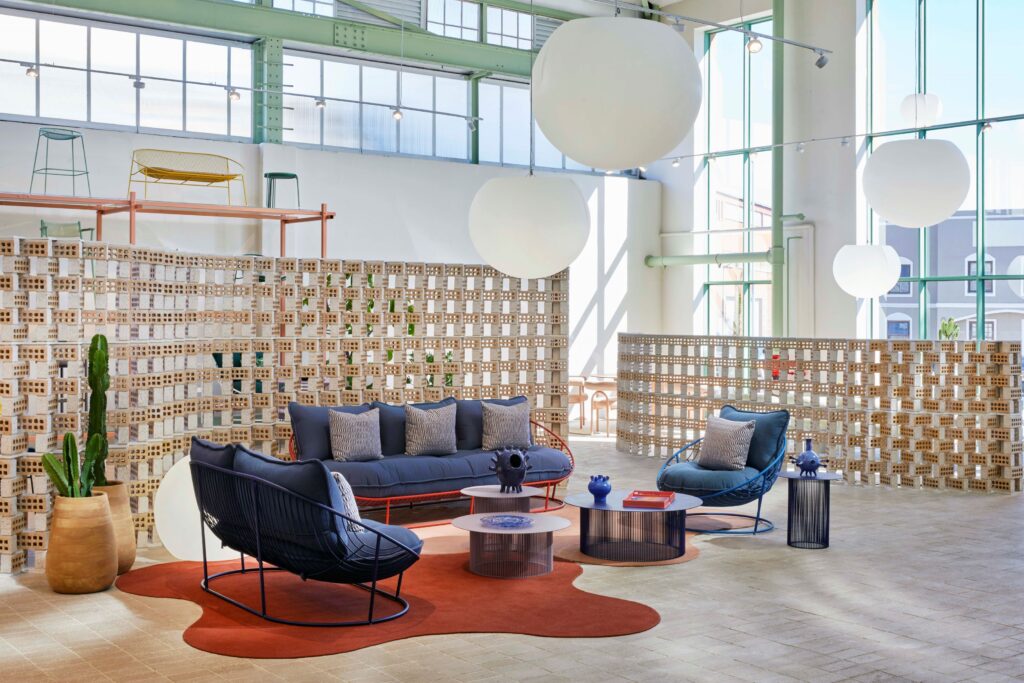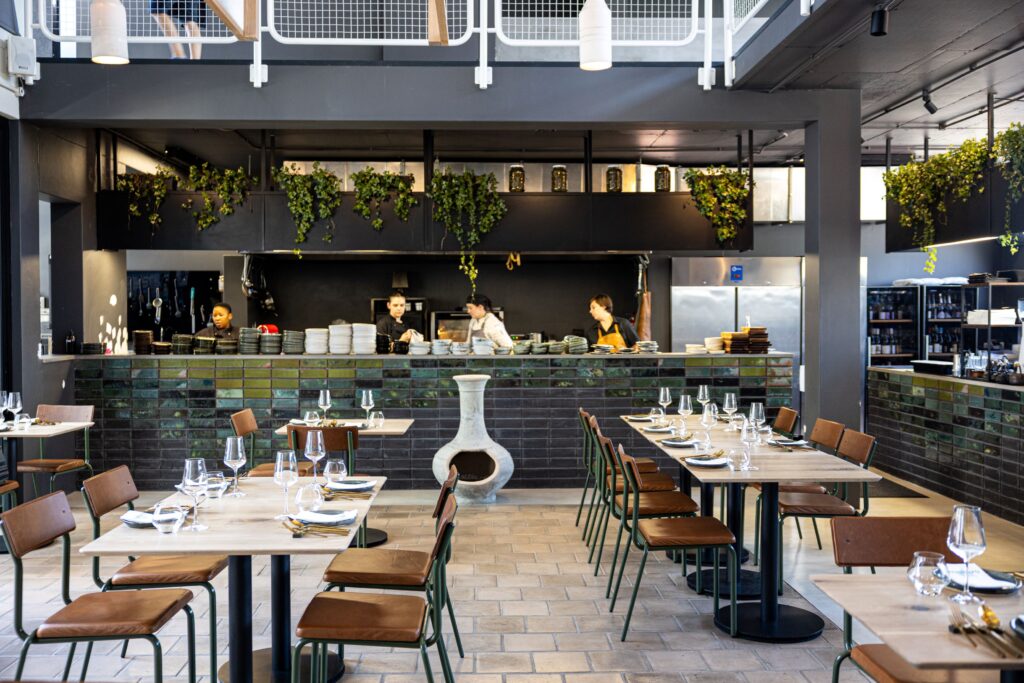Cape Town’s culinary landscape has been graced with the addition of the Galjoen Restaurant, owned by the talented Chef Neil Swart and Anouchka Horn. The establishment is not just a gastronomic delight but a visual masterpiece, thanks to the innovative use of bespoke glazed bricks from leading brickmaker Corobrik.
The collaboration between Asembl. Studio, led by interior designer Annelise Vorster, and Corobrik, along with the expertise of ceramicist Amelia Jacobs from Kleipots, has resulted in a space that is as captivating as it is functional. Commenting on the visual distinction of glazed bricks versus the traditional product, Vorster says the former utilise the structural foundation of traditional bricks and extend the aesthetic possibilities.
Glazing opens a near endless range of both texture and colour, creating an almost artistic application of the glazed bricks as a texture, a pattern, or even a mural. This versatility allows designers to tailor an architectural or interior design to a specific narrative or vision without needing specialist installation, making glazed bricks a simple yet elegant aesthetic option for a wide field of designers.
Glazed ceramic bricks are not only visually appealing but also highly functional. Vorster highlights such advantages as glazed ceramic bricks being impervious to moisture, UV radiation, and thermal fluctuations, making them ideal for exterior use in diverse climates.
In addition, ceramic glazes offer excellent fire resistance, contributing to the safety and longevity of buildings. “The endless colour and textural options also allow for context-specific design solutions, enriched by local ceramicists’ techniques, thereby enhancing the local built environment with locally sourced knowledge and aesthetics,” highlights Vorster. The inspiration for the Galjoen Restaurant’s bar counter came from the ‘Black Fish’ known as the Galjoen, with the design mirroring the colour variations in its scales.
“Drawing on the astounding natural beauty as inspiration, we crafted a gradient effect on the counter front, transitioning from matte black unglazed bricks (Black Brick Satin FBX) to a blend of glazed Terracotta Satin FBS and Black Brick Satin FBX,” elaborates Vorster. This gradient in tile colour and pattern creates a sense of movement and flow, bringing the vibrant essence of the Galjoen to life.
The project was a testament to the power of collaboration. “The collaboration between myself, Corobrik, and Amelia is a testament to the heights that can be achieved when specialists come together,” says Vorster.
Jacobs, a Cape Town-based ceramicist, teacher, and part-time lecturer, brought her expertise in glazing and firing processes, ensuring the vision was executed to perfection. The team experimented with different glazes and firing temperatures, fine-tuning the process to achieve a beautiful and resilient product. Vorster praises Corobrik’s support and openness to exploration and experimentation, which proved integral to achieving the project’s design goals.
The use of glazed bricks in the Galjoen project met both aesthetic and budgetary goals. “I have used brickwork as a substructure for restaurant counters before, mainly as a structural component over which we would layer cladding, tiles, or other finishes. In this project, we had specific budgetary constraints that required innovation from everyone involved. The glazed bricks provided an opportunity to implement a holistic solution that met all our requirements while achieving a customised and enriching result,” explains Vorster.
Alistair Cloete, overseeing Business Development for Corobrik in the burgeoning Western Cape region, says the brickmaker’s range in terms of colours and even shapes and textures has expanded remarkably over the years, allowing for exciting one-off projects like the Galjoen Restaurant to be completed successfully. “Architects used to have limited options, but that has changed significantly. It is entirely up to the architects’ imagination now.”
Another project that featured engobed Vanilla Travertine face brick and graphite modular pavers was at the Haldane showroom in Cape Town, a premium outdoor furniture brand. Engobes are colourants that mainly consist of clay minerals and oxides. Mixing them with water creates a liquid that is sprayed onto the unfired bricks as a thin layer. The engobes are then sintered firmly onto the surface. Engobe spots can cover the brick completely or partially.
Corobrik’s three new engobed products are the first-ever so-called ‘white’ brick in South Africa and Vanilla and Honey Travertine face bricks with an artisanal finish that gives the appearance of a handmade texture. The design potential of the white brick makes it ideal to be used in conjunction with a white mortar for a completely different look and feel.
White brick is popular in residential developments in Europe and the US and is also often used in feature panels. Such a neutral colour is perfectly matched by Corobrik’s range of mono products from black to red and beige. The Vanilla and Honey Travertine face bricks are influenced by the European trend for a heritage look, supplemented by the unique artisanal finish.
Cloete remarks that the Western Cape market differs from Gauteng due to the growth in high-end construction and custom projects. “The region has the appetite and budget to experiment, so it is a market we are closely involved in. We continue to educate architects and interiors designers as to the sustainability, aesthetic, and design benefits of clay brick as a building material.”
The tight budget of the project made the professional team reach out to local craftsmen and suppliers like Corobrik. “Bricks allowed for a highly customised solution while utilising basic building industry knowledge. It is endless what you can achieve in terms of textures, colours, patterns, and murals.”
Cloete says Corobrik’s involvement in such bespoke projects is a major undertaking that starts with making samples. “Historically, Corobrik used to manufacture glazed bricks, but discontinued the product. When Annelise approached us to ask for bricks to be glazed by a professional ceramicist, we were intrigued by the possibility. Seeing the glazed bricks in their final form was amazing, especially as the colour gradation came through as part of the glazing process.”
Vorster adds that Jacobs, a ceramicist with 30 years’ experience, was crucial to the successful outcome. “I explained the colours we were trying to achieve, and she brought it to fruition through multiple test runs. Once we got the bricks right, everyone was excited, and the project came together beautifully.”
Asembl. Studio, the design firm behind the Galjoen Restaurant, is dedicated to quality, innovation, and responsiveness. “Our philosophy revolves around a profound commitment to quality, innovation, and responsiveness,” says Vorster.
“We believe that every project is a unique narrative, and our mission is to bring these narratives to life through meticulously crafted and highly individualized spaces.” The studio’s client-centric approach ensures that projects are not only aesthetically stunning but also functional and deeply personal, crafting experiences that tell a story.





